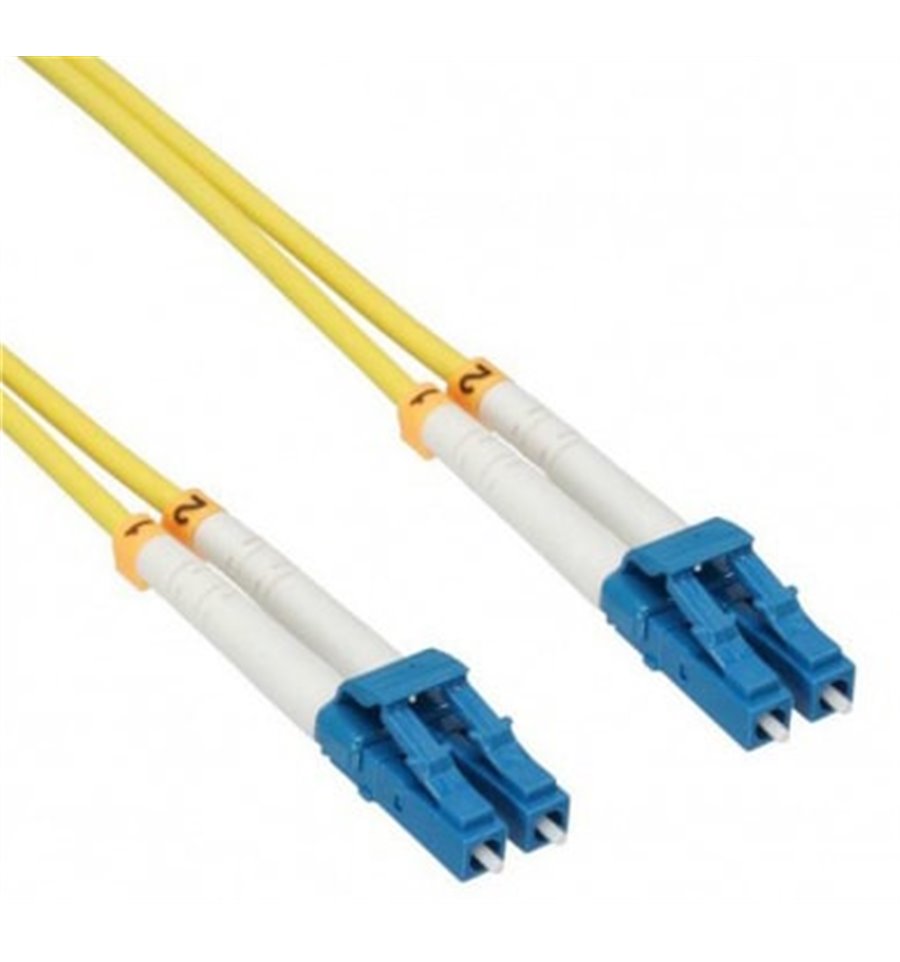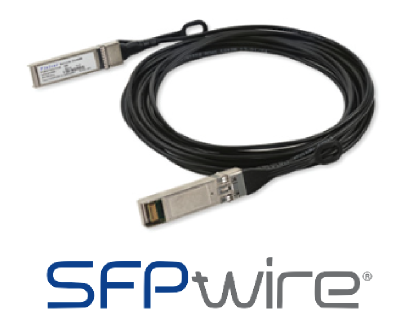|
|
Post by MartinT on Sept 18, 2022 10:40:33 GMT
1. Introduction
There are strong arguments for using a fibre optic link in your system for transmitting digital data for audio. In a classic setup, you will typically use ethernet cable from a router to either a streamer, network bridge or sometimes the DAC itself, depending on what is controlling the music and whether you use files, a streaming service or both. Regardless, ethernet is a very mature computer networking technology for transmitting data in packets, or bundles of data. It has resilience and uses protocols to resend packets that didn't arrive. It can also handle contention when more than one computer tries to talk at the same time. You don't need to worry about those things in a small home setup.
Ethernet consists of four twisted pairs and the data itself is transmitted as ones and zeros using an analogue waveform to define a one and a zero. Yes, all cables use analogue voltages to represent digital data. There is no such thing as a true digital cable! Now you can start to see how ethernet can affect audio sound quality. Superimposed on the data is noise - there can be lots of it but, as I said earlier, ethernet is highly resilient and separates the data from the noise at the receiving end so that computers are oblivious to it.
Audio systems are not oblivious to noise and noise is in fact a sound quality killer even more insidious in digital systems than in analogue. The more noise enters a DAC together with data, the more harmful that noise becomes to the conversion process from D to A. Noise creates 'uncertainty' in the triggering threshold in the 1 to 0 transition and the 0 to 1 transition, which results in a blurring of fine data and a reduction in soundstage, dynamics and the vibrancy of music.
That's the background, but why is optical superior? Simply because optical does not carry electrical noise. There is still jitter in the optical waveform, but overall noise is dramatically reduced. This leads directly to the sound quality benefits explained above.
To be continued...
|
|
|
|
Post by MartinT on Sept 18, 2022 11:02:31 GMT
2. ComponentsSo how does fibre optic transmission work? As far as hi-fi audio is concerned, we use the same hardware as used in computer networks. There is an SFP (Small Form-factor Pluggable) module which plugs into a 'cage' at both ends of the link, and a length of fibre cable in between. There are lots of different SFP standards with different speeds and distance parameters. There are also two different kinds of fibre cable in common use: single mode and multi-mode. This complicates things and the golden rule is that different light frequencies are used and you must match the fibre cable with the SFPs. There are different plug terminations for fibre but we will only concern ourselves with LC to LC, which uses two fibres, one for each direction. Typical SFP module Typical LC to LC fibre Typical LC to LC fibre Single mode fibre uses a fine core such that the light beam passes straight along it without bouncing. Multi-mode cable has a thicker core and light typical takes multiple paths, reflecting along the walls, before arriving.  To be continued...
|
|
|
|
Post by HD Music & Test on Sept 18, 2022 11:07:00 GMT
Martin Make this a sticky thread in the technical section. I remember writing a tomb on this subject back in 2005 regarding the Wadia clock link and AT&T glass optical cabling for serial audio data transfer. The very interesting observations that came out of that were this. NOT all fibre opticals cables are created equal (you can measure the refractive index of each cable) and it was repeatably easy to identify cables from different manufacturers. The length of the FO play a large part of the finial SQ. A fact reinforced with the Wadia 93/92 series of products as the use exclusively FO signal transfer for both the clock & the serial data. The shorter the better that sound. I rediscovered as recently as this week! Also the interface where light is converted to electrcal signalling and the reverse. As you are fully aware as well the quality of the power rail feeding the optical conversion is also important.
For the applicatoon you are referring to its a great upgrade and will alloow the bypassing of that bloody awful ethernet over power line option.
Happy to contribute on this thread |
|
|
|
Post by HD Music & Test on Sept 18, 2022 11:40:56 GMT
You prefer SMF I believe Martin?
|
|
|
|
Post by MartinT on Sept 18, 2022 12:19:49 GMT
I do prefer single mode and will explain why later.
|
|
|
|
Post by MartinT on Sept 18, 2022 17:32:49 GMT
3. OperationThe SFPs discussed in this article (there are other types) convert the ethernet protocol to a light beam via either an LED or laser. Communications are bidirectional, each direction using one of the two optical fibres. At the receiving end, the SFP converts the light signal back to ethernet. There is no other processing inside an optical SFP. The wavelength of the light beam is usually 850nm for multi-mode and 1310nm for single-mode. Multi-mode speeds are usually up to around 2.1Gbps for multi-mode and up to 10Gbps for single-mode. The range for multi-mode is much shorter, usually around 500m. Single-mode can reach 10km and often have a superior laser beam as the light source. The shorter range of multi-mode can be appreciated since the reflecting light taking different paths limits the absolute distance achieveable due to smearing of the arriving pulse due to group delay. Conversely, since single-mode travels in a straight path down the core of the fibre, it remains coherent for very much greater distances.  For audio purposes, many of these specifications are far above what is needed to transmit digital audio. You will typically need a link length of a few metres and a data rate of no more than 100Mbps maximum. The SFP power rating will determine how hot it runs, depending on the design of the receiving component and its casework. So how to choose the ideal components for your optical link? I have performed many hours of comparisons between different SFPs using multi-mode and single-mode fibre. My conclusion is that single-mode sounds better than multi-mode, but even within those broad families, SFP sound quality can vary quite considerably. In as much as I can detect a trend, those SFPs with the highest power rating seem to have the strongest light beam and sound the best. My thought process is that multi-mode by its very operation will cause some smearing of the arriving pulse, which may create some uncertainty when the pulse change is detected, ending as jitter. Single-mode, on the other hand, creates a more coherent train of pulses with much less uncertainty over the triggering point, creating less jitter. This is important for audio quality only and has no bearing over computer operation. To be continued...
|
|
|
|
Post by MartinT on Sept 18, 2022 17:50:32 GMT
4. PracticalitiesIn terms of fibre cable I have only tried one brand of multi-mode cable (no-name LC-LC-OM1) and two brands of single-mode (ipolex and BlueOptics). By far the best sounding of them is ipolex LC-LC-OS2 single-mode available from Amazon and other sources. SFPs are a more tricky choice and I ended up listening for many hours trying out the ones I have. There are far too many for this to be even close to exhaustive, so I recommend that you try at least two to hear the differences for yourself, but remember to match the SFP mode to the cable mode, otherwise it's likely to work very badly or not at all. What I did find is that sound quality varies by a surprising amount so 'SFP rolling' has already become a thing, with enthusiasts exchanging views on the best one for sound. I have given my sound quality rating out of 10 for the ones I have tried. My best sounding SFPs didn't cost me a penny - I retrieved them from obsolete network servers and switches being junked. The HP JD-094B-C wins my personal award for the best and I have settled on running with them at both ends of my link, from Uptone EtherREGEN to Sonore Signature Rendu SE. These beat the BlueOptics and Keystrons by a hair but it's a very close thing. I would like to listen to AfterDark's top recommendation of the Finisar FTLX1475D3BTL but I have yet to find them available from any source. Happy SFP rolling!  Although SFPs are designed for hot-swapping (pulling them out and plugging them in while powered up), I don't recommend doing so as components really need a chance for the SFP protocols to agree and set up stable communications. I have always switched off, swapped the SFPs and powered up first the sending end and then, 10s later, the receiving end.
|
|
|
|
Post by HD Music & Test on Sept 18, 2022 18:40:29 GMT
We have a rather neat tbase 100 Etherley protocol interrogation app with matching text fixture ideal opportunity to look at all pararameters to find a correlation or two I suspect as packet drop out will not be an issue the eye patterns and x/talk will reveal more
|
|
|
|
Post by MartinT on Sept 18, 2022 19:44:07 GMT
We have a rather neat tbase 100 Etherley protocol interrogation app with matching text fixture ideal opportunity to look at all pararameters to find a correlation or two I suspect as packet drop out will not be an issue the eye patterns and x/talk will reveal more That would be most interesting to analyse, Tony. I'd love to be able to interrogate the protocol handshaking between the SFPs to see how they set themselves up, too. As you say, link distance is trivial, especially for single-mode using laser SFPs. |
|
|
|
Post by orange55 on Oct 5, 2022 13:03:46 GMT
|
|
|
|
Post by MartinT on Oct 5, 2022 17:08:48 GMT
The final one, AOC cable, is clear winner over the first two. Different league of transparency and weight to the sound, highly recommend trying it one. Now, you see, there should be a health warning before you make a recommendation like that. I have done lots of SFP rolling and thought I was done with it. However, I have not yet tried an AOC all-in-one solution. Damn, I'm going to have to try it out. |
|
|
|
Post by orange55 on Oct 5, 2022 18:36:18 GMT
The final one, AOC cable, is clear winner over the first two. Different league of transparency and weight to the sound, highly recommend trying it one. Now, you see, there should be a health warning before you make a recommendation like that. I have done lots of SFP rolling and thought I was done with it. However, I have not yet tried an AOC all-in-one solution. Damn, I'm going to have to try it out. Well it will be pain for me also if it’s not as good add the ones your using. The product I listed is a 3m version, they do shorter lengths and you can return it within 30 days. 😀 |
|
|
|
Post by MartinT on Oct 5, 2022 18:54:10 GMT
I use a 4m run but 3m will just reach, so I've ordered one.
We shall see, let battle begin.
|
|
|
|
Post by nicholas on Oct 5, 2022 19:51:46 GMT
Just found a cheap pre-owned Active Optical Cable (AOC) and snapped it up... will be interesting to see how it compares.
|
|
|
|
Post by orange55 on Oct 11, 2022 9:36:02 GMT
I use a 4m run but 3m will just reach, so I've ordered one. We shall see, let battle begin. Is there any update on the new cable? |
|
|
|
Post by MartinT on Oct 11, 2022 9:38:52 GMT
I now have it. Will probably try it out tonight.
|
|
|
|
Post by MikeMusic on Oct 11, 2022 9:48:18 GMT
I now have it. Will probably try it out tonight. Probably  |
|
|
|
Post by MartinT on Oct 11, 2022 20:39:54 GMT
Today I received a Finisar FCBG110SD1C03 low jitter 10Gbps AOC - Active Optical Cable - which is a combination of two SFPs and a length of fibre cable all manufactured into a single item. Thanks to orange55 for the suggestion. I really REALLY was not expecting it to dethrone my all-time favourite HP JD094B-C SFPs from their top position in my tests, so I rather reluctantly took them out and replaced them with the 3m AOC which is too short and hangs between the EtherREGEN and Signature Rendu SE in an unsightly manner. It also entailed switching both components off because I don't entirely trust hot-plugging.  Now, I had to curtail my evening somewhat so I'm also reluctant to report fully on its performance without putting more hours on it and a lot more music through it. I'm just going to say this, for the moment. From cold, I immediately heard some more ultra-fine detail and even sharper, whipcrack-like dynamics most apparent on drums. However, the thing which took me most by surprise is the bass. I thought the HPs were head and shoulders above the other SFPs in this area but the Finisar takes structural bass to a further high (or is that low). Right, I'm going to leave it there but let's just say I've found the damned thing in a 5m length and my finger is hovering over the Place Order button. Meanwhile, it's on a diet of Radio Paradise overnight and I'll report some more findings tomorrow. |
|
|
|
Post by MartinT on Oct 12, 2022 8:02:07 GMT
|
|
|
|
Post by mansie on Oct 12, 2022 13:31:58 GMT
I am currently running a 10 mm ethernet cable between router and streamer. If I replace this with an active optical cable, would I need to bookend this by two boxes that (router side) convert electric to optical and (streamer side) optical to electric ethernet again?  |
|












